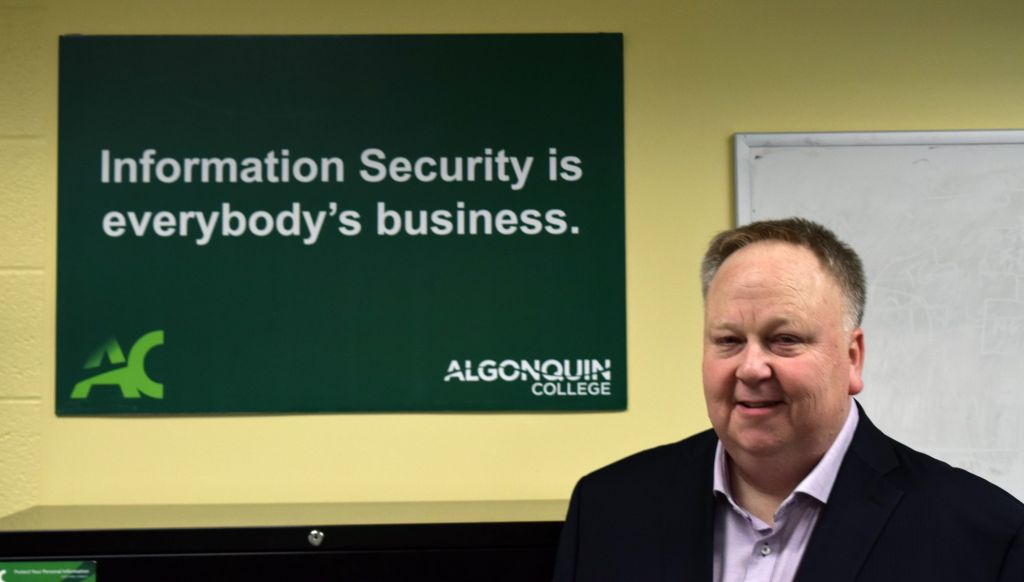The cybersecurity unit at Algonquin is keeping the college at the forefront of innovation with a new European technology to maximize cubicle worker efficiency.
The technology was first implemented in November 2016 by cybersecurity unit senior manager, Craig Delmage. The system is called the Luxafor Flag, produced by the Latvian-based company GreyNut Ltd.
The technology is a seemingly simplistic light notification system. Each cubicle gets a small LED flag that lights up different colours according to what the employee is working on.
Green means open, able to talk. Yellow is operational, doing “heads down” detailed work. Blue indicates a training activity. Red signifies caution, personal time or emergency situation: Do not disturb.
The technology may be simple, but it has been remarkably successful for the cybersecurity unit.
“Without a doubt it has improved our efficiency,” Delmage said. “There’s been a lot of positive feedback from the staff.”
Delmage credits the success of the technology with the tight-knit dynamic of his four-person staff, who work very closely together. For the Luxafor system to work, the staff need to agree on what each colour of light means, and collectively respect them.
“We’re good rule followers here,” Delmage said. “It was a bit of a social experiment to start with.”
Cybersecurity unit employees confirm the system has been a positive change.
“It works for sure,” said security technologist Robert Turner. “I notice I’ve been interrupted a lot less, which is great.”
Delmage thinks that the technology could be adopted at large throughout the college. Cubicle workers are interrupted 29 per cent more than people in private offices and once interrupted, it takes up to 20 minutes for the brain to refocus, according to the Luxafor marketing.
Since many Algonquin employees work in shared cubicle space, implementing the Luxafor system at large could have huge potential for improving efficiency throughout the college administration.


